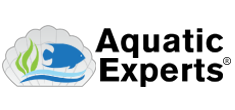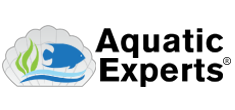

DIY Aquarium Filter Pads: Easy & Effective Solutions!
What all aquarium hobbyists have in common is a desire for crystal-clear water. At first glance, fish tank water may appear clear, but looking at it from the end often reveals particles, giving it a slightly cloudy appearance. This cloudiness can be removed with mechanical filtration, which could involve a filter pad, filter floss, a sponge, or filter socks.
When I had a large aquarium store and an aquarium service division, we serviced freshwater, saltwater, and reef aquariums. Our customers expected their tanks to be crystal clear. Over the 25 years I ran my aquarium store, we tested numerous filter pads to find the best ones for achieving the best results. We encountered some that were too flimsy, some that caused dye to leach into the water, and none that were the perfect filter pad.
After leaving my aquarium store, I embarked on designing a new filter pad. Through extensive testing and visiting various factories, I finally developed the ultimate pad called our FilterFirst filter pad.
What makes this pad unique is its dual-layer design. The top layer features an open weave to trap large and medium-sized particles, while the bottom layer consists of a dense network of fibers that trap fine particles. As water flows through the top layer, plant leaves and uneaten fish food get trapped, and the smaller particles are captured in the dense bottom layer, ensuring pure water.

If we turned the pad upside down and ran the water through the bottom layer first, the filter pad would clog up very quickly because it is so fine that it traps large, medium, and fine particles.
When we developed this system, it worked exceptionally well. This filter pad is highly durable, allowing for multiple rinses and reuses, or you can replace it as needed. It is available in six-foot, twelve-foot, twenty-four-foot sizes, or even eighteen inches long for wider filtration systems. The premium dual density filter pad works well in wet-dry filters, sumps, bio ball filters, canister filters, and hang-on-back filtration systems.
Our filter pads are designed for easy customization. With a pair of scissors, you can cut them to fit any canister filter. Start by creating a template out of cardboard, then cut the material to the right size. You can save your template in a re-closable plastic Ziplock bag and use it to make as many as you need.
As we discussed, water will flow through the open side of the filter pad, trapping larger debris first, and then through the tighter network. If you're hosting a party or simply want to ensure the clearest water possible, you can use a polishing pad. Polishing pads come in different sizes or micron ratings. We offer 50-micron and 100-micron ratings. The 50-micron pad has a tighter pore size, which means it will clog up faster.
Here's how it works: the water will flow through the filter pad, starting with the open side, then passing through the tight network, and finally into the polishing pad. The water will flow through the open side of the filter pad, then through the dense layer, and lastly through the polishing pad.
When water flows through our polishing pad first, it can clog up quickly. The polishing pad typically has a soft side and a rough side, though sometimes both sides are soft. The rough side helps prevent fiber migration, keeping the pad from pilling up or getting rough. Generally, the smooth side should face up. You can cut the pad to fit your filter as needed. The water will pass through the fluffier, wider-spaced side first and then through the fine network.
I’m a big fan of the dual density filter pad, but it might not be suitable for everyone. It works well for about 90 to 95 percent of aquariums. The reason is that some people have large fish or lots of fish that are fed heavily.
This filter pad can clog up fairly quickly, typically within a week or so. To maintain high water quality, it's essential to change or rinse the filter frequently. However, many people don’t have the time to rinse as often as needed or have large fish that consume a lot of food, resulting in the desire for a filter pad with a more open weave rather than a tight one.
This is our classic line, featuring a blue dye with a white background. However, it is not dual density despite having two different colors.
When you see filters that are colored pink, orange, red, or green, it doesn't mean they are dual density; it just means they have been dyed to look appealing. In this case, it does not matter if the water flows through the top or the bottom; the filter pad will still trap larger debris, but it will not trap the fine debris like the premium dual density filter pad.
When I ran my aquarium store, we often noticed colored dye leaching into the water. This indicated that the carbon in our filters was being used up to remove the dye, which was not what we wanted. After some research, we discovered that the glue being used was polyvinyl acetate, which is water-resistant but not waterproof, similar to wood glue.
We figured out how to use an actual waterproof glue to mix with our blue dye. This ensures that when you're using it, the color won't fade, and the dye won't be absorbed by the carbon. If you're not using carbon, your water won't change color either.
If you enjoy hosting parties or having guests over, consider layering your aquarium filter with a polishing pad. This allows water to pass through both filter pads, achieving crystal-clear clarity. When you're busy and don’t have time to rinse the filter pads, simply remove the polishing pad and leave the classic filter pad in place.
All our filter pads are washable and reusable. Rinse them in a sink for regular maintenance. If you use a biological filtration system, rinse the filter pad in dechlorinated water; otherwise, regular water will suffice. The polishing pad can even be washed in the washing machine. For detailed cleaning instructions, visit our website.
Our products come in large packages, so you'll have plenty of filter pad material to cut and use as needed. While I appreciate both the classic and polishing pads, my top recommendation is the premium dual density filter media. It's highly favored by our customers and service companies, delivering exceptional results. This is the one you should choose.

-
FilterFirst has a dual-density design to capture both large and small particles. The loose, thick layer traps debris before it clogs the thin, tightly women pad so it can hold more before needing to be replaced.
-
FilterFirst's dense weave polishes water to make it crystal clear without the need to add chemicals to the tank. Its fine mesh captures minute particles that cloud your aquarium.
-
FilterFirst has no dyes or other chemicals that could leak into your tank. Both layers are 100% polyester fibers bound with waterproof glue and woven together.
-
FilterFirst is a cheaper alternative to expensive filter cartridges; AND its two layers are bound together to make it last longer than other two-payer filter material.
-
FilterFirst is easy to cut into whatever shape is needed to fit your aquarium filter. It will work in most traditional hang-on back filters, canisters, and sumps.


This 3rd generation dual layer aquarium filter pad is even thicker than before. The top layer traps large debris while the lower layer traps fine debris. Making it an ideal aquarium polyfill for aquarium filter. This filter floss for fish tanks even keeps goldfish tank water crystal clear.



This aquarium filter roll is constructed of durable polyester fibers bonded by our special resin to give it exceptional strength. For sparkling clear water place our aquarium polishing filter pad after our FilterFirst filter floss roll.

CREATE TEMPLATES
Universal filter floss for any shaped filter!
Since filter pads need to be replaced on a regular basis, a cardboard template can be made of the poly filter or sponge filter pad you are replacing. Our premium true dual density filter roll is the top choice for cut to size filter pads for aquarium.

CUT TO FIT YOUR FILTER
Easy-cut bulk rolls save you money!
Use a sharp pair of scissors to easily cut the filter pad to your desired shape and size. FilterFirst filter floss pad is ideal for canister filters, HOB filters, wet dry, sump filters for aquarium, and as a pond filter media in small pond filters.

PLACE IN FRONT OF FLOWING WATER
Trap LARGE to Fine Particles!
Place FilterFirst aquarium filter media pad with the loose side in front of the flowing water. This allows the filter floss loose side of the pad to trap the larger particles leaving the tight filter fibers to trap fine particles. Changing filter media aquarium pads regularly will increase water quality.
This poly filter floss pad works perfectly in viquariums, tropical fish and discus aquariums, African cichlid tanks, live planted tanks, goldfish tanks, amphibian tanks, shrimp tanks, indoor and small outdoor ponds, and water gardens.

Dependable Products For All Types Of Aquariums and Ponds
Join the CLUB for new videos, discount codes, and more!
Join The Club for A 15% OFF Coupon
Aquatic Experts provides simple solutions, tested products, and expert information to aid aquarium and pond hobbyists in creating exceptionally beautiful, healthy aquariums and ponds.









